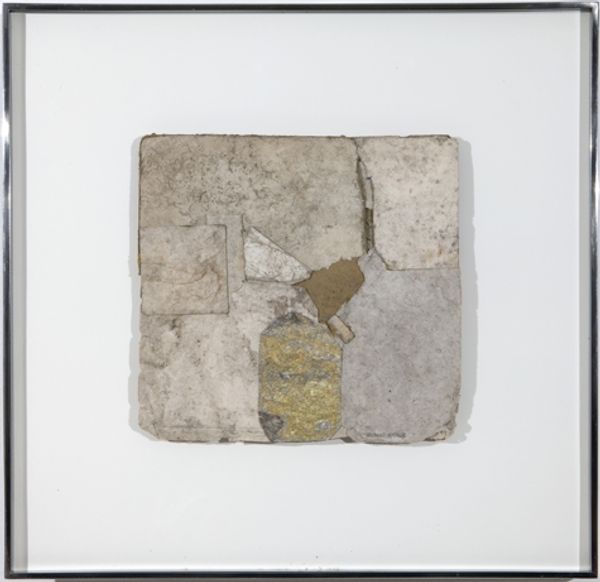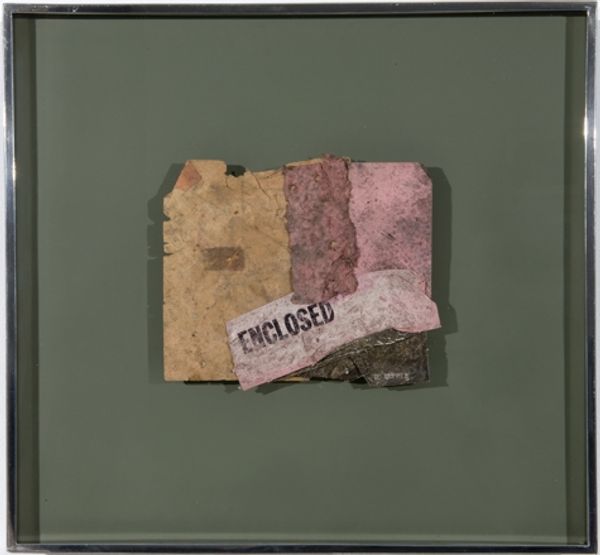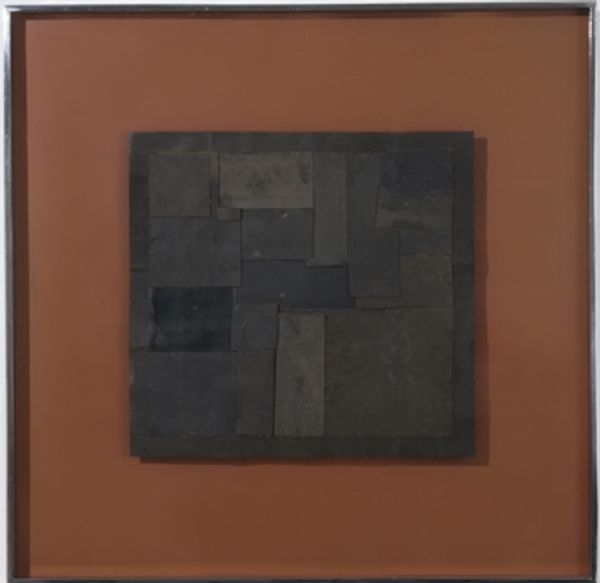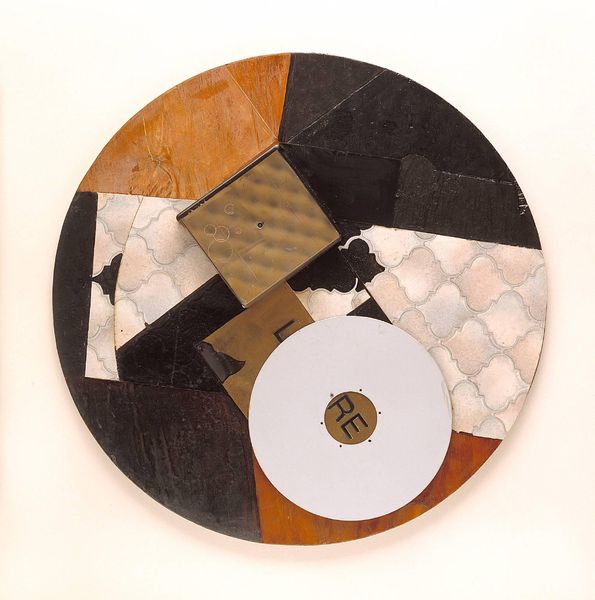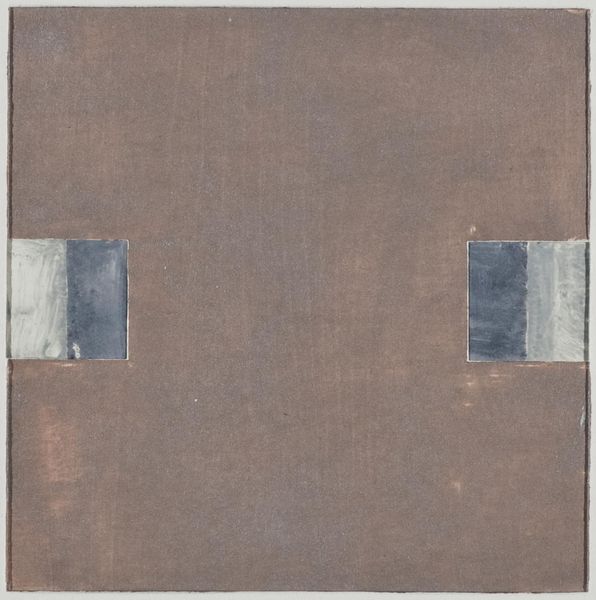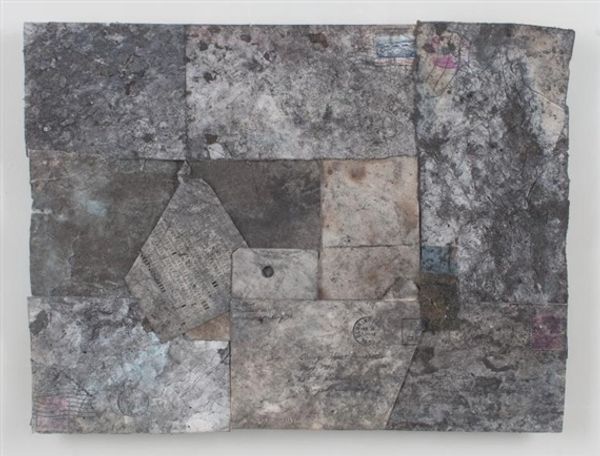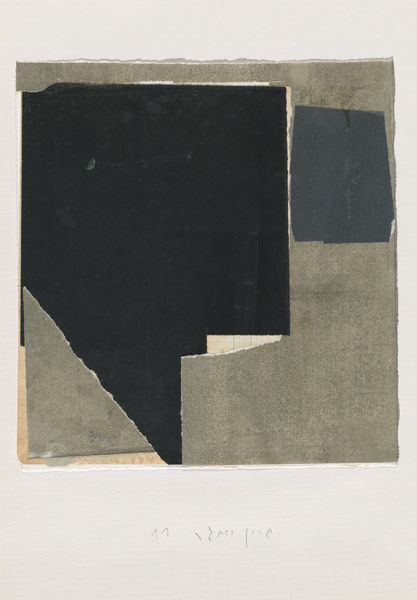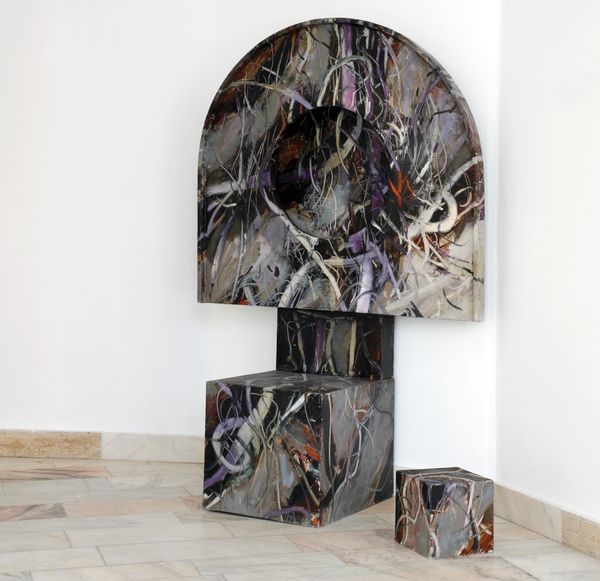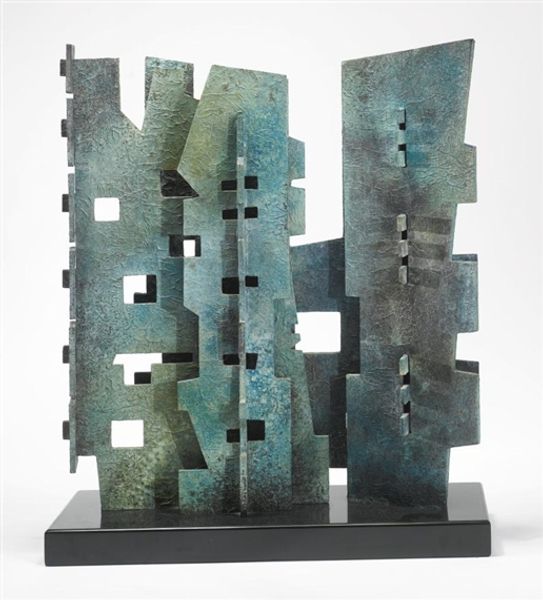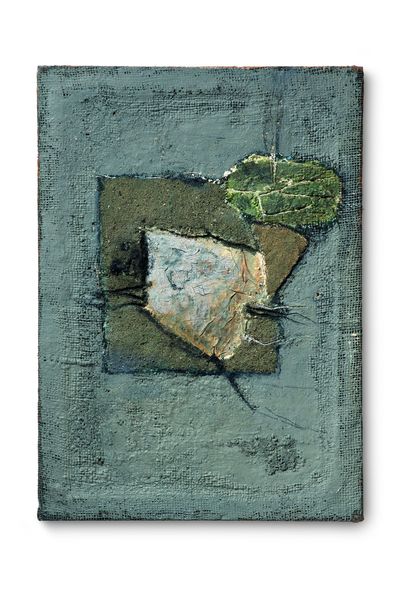
Copyright: Robert Nickle,Fair Use
Editor: Right now, we're looking at Robert Nickle’s "Untitled" from 1975, a mixed-media assemblage that gives the impression of something worn, almost archaeological. What's your interpretation of this piece? Curator: I see this work as a powerful statement on consumer culture and the passage of time. The layering of found materials, predominantly paper, echoes the build-up of waste in our society. It's not just abstract; it's a record of human activity. Notice how the fragmented shapes hint at discarded posters, receipts, or even packaging. Do you see how the work prompts questions about what we value and what we leave behind? Editor: It does feel like it’s hinting at a bigger picture with the bits of colour, a forgotten billboard maybe? What is the significance of this style coming out of abstract expressionism? Curator: Abstract Expressionism often explored individual expression, but artists like Nickle brought a critical lens to social structures, using abstraction to dissect the societal forces around us. By incorporating found objects, Nickle is speaking to the ephemerality of objects within Capitalism, it also challenges traditional art practices by blurring lines of low art and high art.. It suggests an almost cyclical view of obsolescence. Editor: That really resonates! I’d never considered the piece’s activist implications or the cultural symbolism rooted within the collage work itself, rather than only the shape. Curator: Art provides a means to confront these questions. What started out as abstraction opens up conversation regarding consumption and its implications on both societal structures and individual identity.
Comments
No comments
Be the first to comment and join the conversation on the ultimate creative platform.
